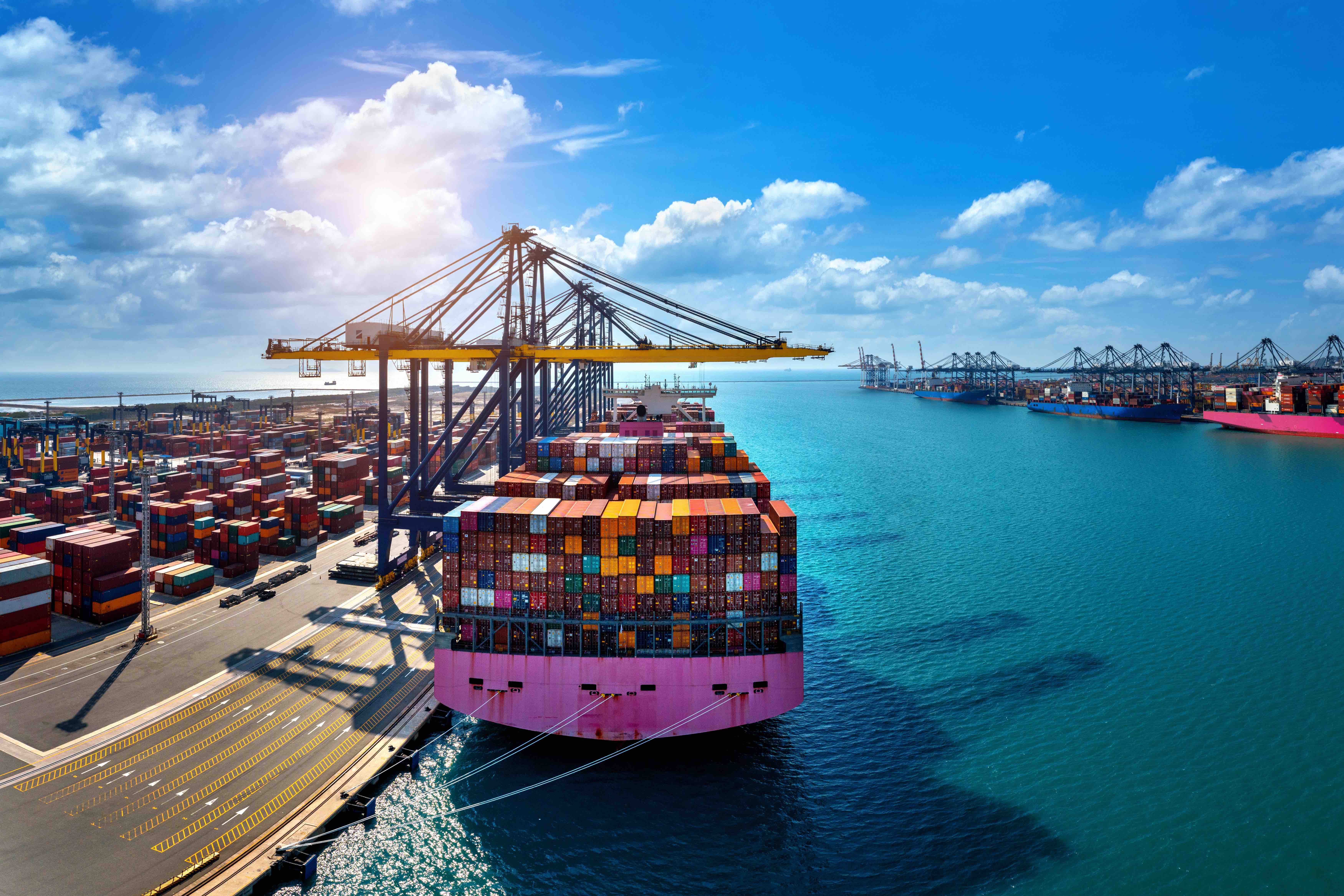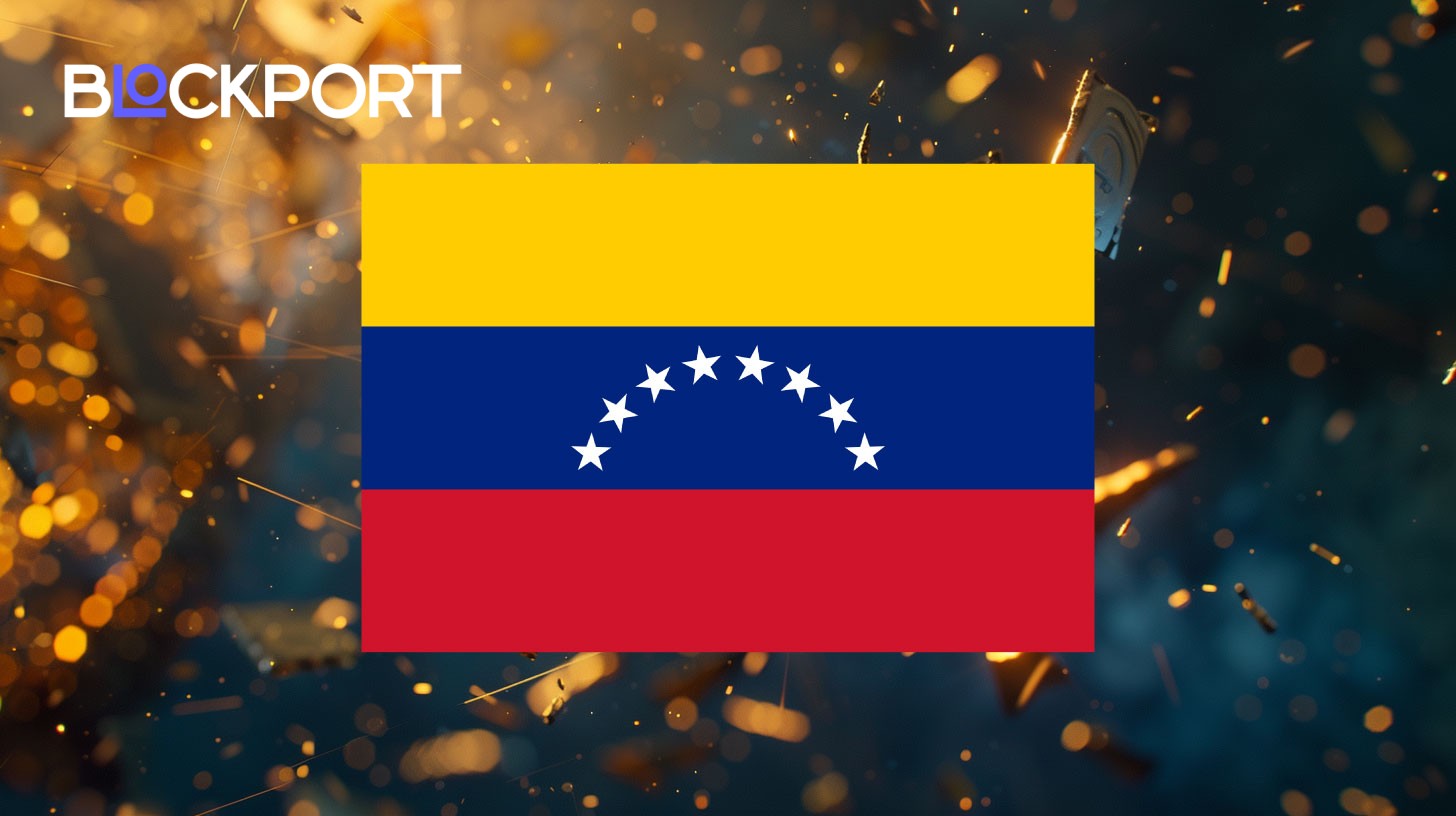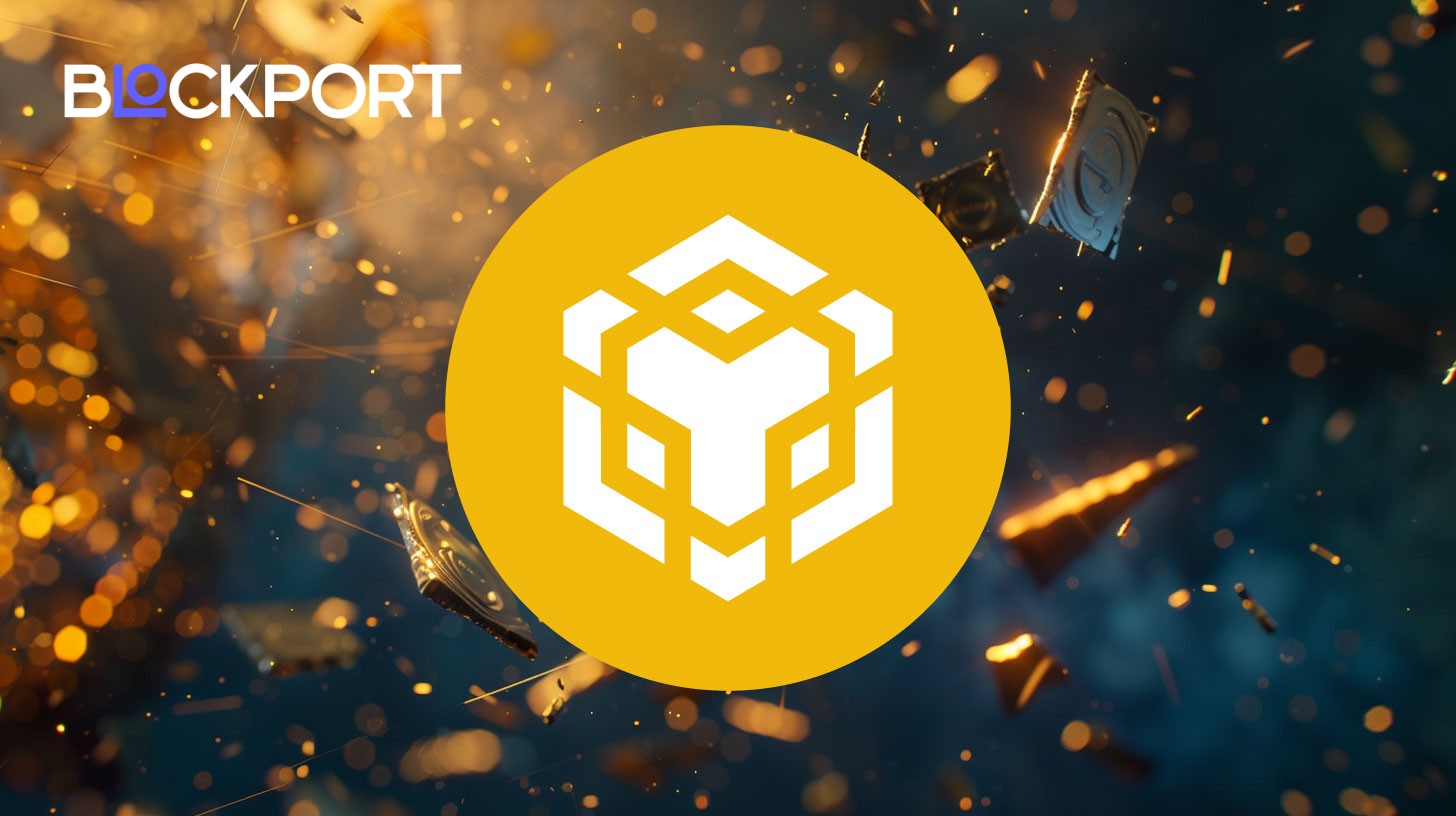Blockchain for supply chain: what problems does the technology solve?

Using smart contracts, blockchain provides a clear, tamper-proof record of products across the entire supply chain.
At first glance, blockchain and supply chain management may seem unrelated. One handles production, logistics, and the flow of goods and services, while the other is mostly known as the tech behind cryptocurrencies like Bitcoin. Yet blockchain’s design enables use cases across industries, including supply chain management. Ahead, we’ll cover why supply chains need change, how blockchain fits in, and the latest developments.
Blockchain technology: core concepts and fundamentals
Blockchain is a shared digital ledger stored across many computers in a network, called nodes, instead of sitting on a single server. A blockchain is made up of blocks, each containing three main components: the data, a timestamp, and a cryptographic hash of the previous block. This hash is a unique string of characters, like a fingerprint for the block’s data. If the data changes, the hash changes, breaking the chain. The “chain” in blockchain comes from linking blocks through these hashes. This creates immutability; once something is recorded, it’s essentially permanent.
There’s always a chance of supply chain errors:
- Blocks that store data and link together using hashes.
- Decentralization, where data is spread across many nodes.
- Consensus mechanisms to ensure agreement on the ledger’s state.
- Immutability to keep the record tamper-proof.
- Smart contracts for automated, trustless applications.
Decentralization means there’s no central authority, like a bank or government controlling the ledger. Every node holds the same copy, making the network resilient; even if some nodes fail, it keeps running. Consensus mechanisms let participants agree on the blockchain’s state without relying on a single authority. For example, Proof of Work, popularized by Bitcoin, requires miners to solve complex mathematical problems to validate transactions and add new blocks.
Blockchains can be public or private. Public blockchains, like Bitcoin or Ethereum, are open to anyone. Private or permissioned blockchains restrict access to selected participants and are often used by companies for blockchain supply chain management, tracking goods, and verifying data at every stage. Hybrid models combine elements of both, giving organizations some control while still benefiting from blockchain’s transparency and security.
Finally, blockchain’s use beyond peer-to-peer transactions relies heavily on smart contracts, programs stored on the blockchain that execute automatically when certain conditions are met. They can automate processes like payments, escrow services, and supply chain steps without intermediaries, saving time and reducing errors.
Key advantages of applying blockchain in supply chain operations
A growing number of companies, including Walmart, Ford, and Nestlé, have adopted blockchain in their supply chain processes.
There are several ways companies can benefit from blockchain technology and supply chain integration:
Better transparency
Information management is critical in supply chains to track the origin of materials, monitor processes, and ensure all stakeholders follow rules. Traditional systems often struggle with limited visibility and fragmented communication. Different parts of the process – sourcing, production, and logistics – often operate independently with delayed data updates, making it hard to detect and resolve issues promptly. Blockchain solves this by providing a shared, tamper-proof ledger accessible to all participants. Enterprises can set standards, define conditions, and control access permissions, ensuring reliable, real-time data and stronger accountability across the supply chain.
Stronger security
There’s always a chance of supply chain errors, which can result in false information or unsafe products sneaking in. Beyond this, systems can be intentionally compromised by hackers and malicious actors, leading to data breaches, altered inventory records, fraud, and disrupted operations, causing major headaches for businesses and customers.
One notable case occurred in November 2024, when Amazon experienced a data exposure in which millions of user records were published on a data leak forum. The company, then, said the incident originated with a third-party vendor. Blockchain can address these security challenges by providing a shared, tamper-proof ledger that updates information in real time. Records cannot be altered without leaving a trace, significantly reducing the risk of fraud or unauthorized changes.
Automated processes
Smart contracts, built on blockchain, can automate transactions and agreements across different parts of the supply chain, eliminating the need for third parties. For instance, a smart contract could automatically release payment once a shipment is confirmed delivered, ensuring that every step happens exactly as planned. This automation reduces human errors, speeds up operations, and provides greater consistency throughout the supply chain.
By automating workflows and removing intermediaries, blockchain also helps businesses save time and money. Manual back-and-forth communications, paperwork, and unnecessary delays become a thing of the past. With real-time, automated processes, resources are used more efficiently, and businesses can respond faster to changing conditions, all while maintaining transparency and reliability across the entire supply chain.
Complete traceability and control
Any movement in the supply chain can be tracked through blockchain in real time. This makes it easier to verify product quality, check ingredients and materials during production, and monitor other important information flows. For businesses, this means clear visibility into where a product comes from and how it moves through each stage of the process. Customers also gain the ability to confirm authenticity and ethical sourcing. If issues arise, such as contamination, defective parts, or counterfeit goods, they can be traced back to the source, enabling faster recalls and more effective solutions. Blockchain turns traceability from a slow, paper-based task into an instant, reliable process.
Real-world examples of blockchain use in supply chain management
Most industries that produce physical goods now depend on third-party manufacturers or vendors. At the same time, concerns such as child labor, environmental impact, forgery, and other illegal practices highlight the need for transparent, reliable information sharing.
With blockchain monitoring production processes in real time, companies can verify that ethical, legal, and quality standards are met at every stage. This isn’t just a theoretical benefit, there are many proven blockchain supply chain use cases in action today.
Several industries demonstrate blockchain’s practical applications:
- Food safety and traceability – Global food companies use blockchain to trace products back to their sources. For example, Danone launched the Track & Connect service in 2020, allowing consumers to access information about its baby formula products.
- Pharmaceuticals and counterfeit drugs: Blockchain helps pharmaceutical companies, such as FarmaTrust, monitor medicines throughout the supply chain, reducing the risk of counterfeit drugs reaching patients. This protects public health and ensures quality control.
- Electronics and component tracking: Blockchain helps trace every part used in electronic devices, ensuring manufacturers use certified components and reducing the risk of faulty or counterfeit parts ending up in final products.
- Luxury goods verification: Brands like Louis Vuitton and De Beers track the origin and authenticity of luxury goods, from diamonds to designer fashion, ensuring customers receive genuine products while fighting counterfeiting.
- Automotive supply chain tracking – Car manufacturers use blockchain to verify the authenticity of parts, monitor suppliers, and prevent the use of substandard or counterfeit components in vehicle production.
- Sustainable sourcing verification – Companies in industries like coffee, cocoa, and seafood use blockchain to prove products are ethically and sustainably sourced, providing transparent data to consumers and regulators.
Potential obstacles and drawbacks of blockchain in supply chains
Even with its benefits, blockchain for supply chain management comes with its fair share of challenges. Several key challenges must be addressed:
Integration complexity
Most supply chain systems rely on legacy infrastructure that wasn’t designed for blockchain integration. Connecting existing Enterprise Resource Planning (ERP) systems, inventory management platforms, and third-party logistics software requires extensive technical expertise and custom development work. This integration complexity often results in longer implementation timelines and higher costs than initially anticipated. Interoperability poses an additional challenge. Supply chains often span multiple countries, industries, and stakeholders, each with different systems and standards. Getting all participants to adopt the same blockchain framework, or at least integrate with one another, remains a complex task.
Scalability limitations
With high transaction volumes in supply chains, blockchain networks can get congested, which slows down transaction speed and makes scalability a real issue. When transaction volumes grow and processing takes longer, it affects the overall efficiency, reliability, and responsiveness of the supply chain. A solution could be to use blockchains optimized for supply chain operations that can handle high volumes, or for enterprises, to build private chains tailored to their specific operational and security needs. As blockchain adoption grows, finding ways to improve throughput and reduce latency will be critical for maintaining seamless supply chain operations.
Concerns over data privacy
Blockchain records all transactions and shares them with participants. While this supports traceability, it can expose sensitive business information, like pricing, supplier details, or shipment volumes, to competitors or unauthorized parties. Supply chains often involve multiple partners, some of whom don’t need access to all data. Without careful permission controls, sensitive information may be visible to the wrong eyes. Companies can protect this data using encryption, permissioned blockchains, or hybrid systems, keeping information private while still benefiting from blockchain.
Regulatory and legal uncertainties
Regulations for the blockchain industry are still developing and differ from country to country. Each region may have its own rules for compliance, data protection, and cross-border transactions. For multinational supply chains, this creates challenges when implementing blockchain solutions, as they must meet all applicable legal requirements. Navigating these complexities can be time-consuming and costly. Clearer and more unified regulations would make it easier for companies to adopt blockchain safely and efficiently across borders.
Resistance to change
Many supply chain stakeholders may be hesitant to adopt new technologies, especially when current systems seem to work fine. Convincing everyone to switch to blockchain standards often requires strong change management, training, and clear communication. Companies need to show the benefits and potential return on investment to overcome skepticism. Without careful planning, organizational inertia can slow adoption, delaying the advantages that blockchain could bring to efficiency, transparency, and security in supply chain operations.
Proven strategies for effective blockchain integration in supply chain processes
Blockchain technology in supply chain management offers transparency, traceability, and security. Recording each transaction on a shared ledger ensures that information is accurate, consistent, and tamper-proof across the entire chain of participants. However, effective integration requires thoughtful strategies to unlock its full potential.
Clear goals make integration easier
One important strategy is setting clear goals before adopting blockchain. Supply chains are complex, and not every problem requires blockchain to solve it. It’s important to align blockchain use with real business needs rather than treating it as a trend. When integration is guided by clear objectives, such as reducing delays, preventing fraud, or improving traceability, it delivers measurable value. This practical alignment strengthens the case for adoption and demonstrates the technology’s relevance in solving existing problems rather than creating unnecessary complexity.
Building collaboration across the chain
Blockchain works best when everyone in the supply chain is on board. This means farmers, manufacturers, distributors, retailers, and regulators need to align on how data is distributed. For blockchain to work effectively in this environment, participants must follow shared standards and practices for recording and sharing data. Without a common framework, the benefits of decentralization may be limited by inconsistency or lack of trust.
Picking/building the right blockchain infrastructure
Not every supply chain needs the same kind of blockchain. Some industries may benefit from public blockchains that provide open transparency, while others may require private or consortium blockchains to keep sensitive data secure and transactions fast. Choosing the right infrastructure also means considering scalability, transaction costs, and how easily the system can integrate with existing supply chain software.

Testing the technology
Before rolling out blockchain across an entire supply chain, starting with a pilot program is often the most practical approach. Companies typically begin in areas where they have the most control, then bring in a limited number of partners on either side of the process to evaluate performance. This gradual adoption allows stakeholders to test the system, identify challenges, and measure outcomes before expanding the solution. A phased approach helps build confidence and reduces the risks that come with sudden technological shifts. Over time, this strategy supports smoother integration and greater acceptance among participants.
Ensuring interoperability
Successful blockchain adoption depends on how well it works with existing systems. Supply chains often rely on multiple tools for planning, inventory, and logistics. Blockchain cannot exist in isolation; it must integrate seamlessly with these platforms to maintain smooth information flow. Approaches that prioritize interoperability ensure blockchain strengthens, rather than disrupts, current processes, creating a solid foundation for innovation without overhauling established systems.
Long-term adaptability
Blockchain adoption is not a one-time process; it requires ongoing adjustments as technology evolves. These networks also undergo developments, such as network upgrades and protocol changes. Flexible strategies that encourage innovation and adaptation help supply chains stay ahead of challenges and fully realize the potential of blockchain integration.
Keeping compliance in mind
Using blockchain technology in supply chain management comes with legal and regulatory challenges. Different countries have different rules about data privacy, digital signatures, and cross-border transactions. For blockchain to work properly, these rules need to be followed. Making sure the system meets all relevant laws helps keep operations safe, builds trust, and ensures the supply chain runs smoothly across all participants.
Education and awareness
Understanding blockchain technology in supply chain management is key. Stakeholders at every level, from production to logistics to retail, need to be familiar with blockchain concepts, its benefits, and potential challenges. Providing training and resources helps teams use the technology effectively and confidently. Awareness programs also build trust among participants, ensuring everyone follows agreed standards and practices while taking full advantage of blockchain’s capabilities.
The role of blockchain in shaping the future of supply chains
With supply chains becoming more digital and spread across regions, keeping data secure, reliable, and traceable is increasingly important. Blockchain offers tools to record transactions permanently, maintain transparency, and prevent tampering. Still, practical implementation requires careful attention to limitations such as network speed, compatibility with existing systems, and protecting sensitive information. Emerging solutions like Zero-Knowledge Proofs (ZKPs) and interconnected chain designs aim to address these challenges and improve privacy and cross-platform functionality.
Smart contracts will increasingly automate routine supply chain processes, from purchase orders to payment settlements. These self-executing contracts can automatically trigger reorders when inventory reaches predetermined levels, release payments upon delivery confirmation, and adjust pricing based on real-time market conditions. This automation reduces human error, accelerates transaction speeds, and minimizes administrative costs across the entire supply network. Consumers are increasingly demanding visibility into product origins and manufacturing processes.
Blockchain-enabled supply chains provide real-time access to comprehensive product histories, including raw material sources, manufacturing locations, transportation routes, and environmental impact data. This transparency will drive competitive advantages for companies committed to ethical sourcing and sustainable practices. Blockchain will also enable the transition to circular economy models by tracking products throughout their complete lifecycle, including post-consumer phases. This capability enables efficient recycling, refurbishment, and material recovery programs. Companies can create digital passports for products that persist beyond the initial sale, supporting secondary markets and reducing waste.
Standardization efforts will create interoperable blockchain networks that connect disparate supply chains across industries and geographies. These interconnected systems will enable seamless data sharing between partners while maintaining competitive privacy. Global standards will emerge for product identification, quality certification, and compliance documentation. Integration with IoT sensors and artificial intelligence will transform blockchain from a passive recording system into an active intelligence platform. Predictive analytics powered by blockchain data will anticipate disruptions, optimize routing decisions, and automatically adjust supply chain parameters based on real-time conditions. As these capabilities mature, blockchain will evolve from a supporting technology to the foundational infrastructure underlying global commerce, creating supply chains that are more resilient, efficient, and responsive to changing market demands.
Content on BlockPort is provided for informational purposes only and does not constitute financial guidance.
We strive to ensure the accuracy and relevance of the information we share, but we do not guarantee that all content is complete, error-free, or up to date. BlockPort disclaims any liability for losses, mistakes, or actions taken based on the material found on this site.
Always conduct your own research before making financial decisions and consider consulting with a licensed advisor.
For further details, please review our Terms of Use, Privacy Policy, and Disclaimer.




























